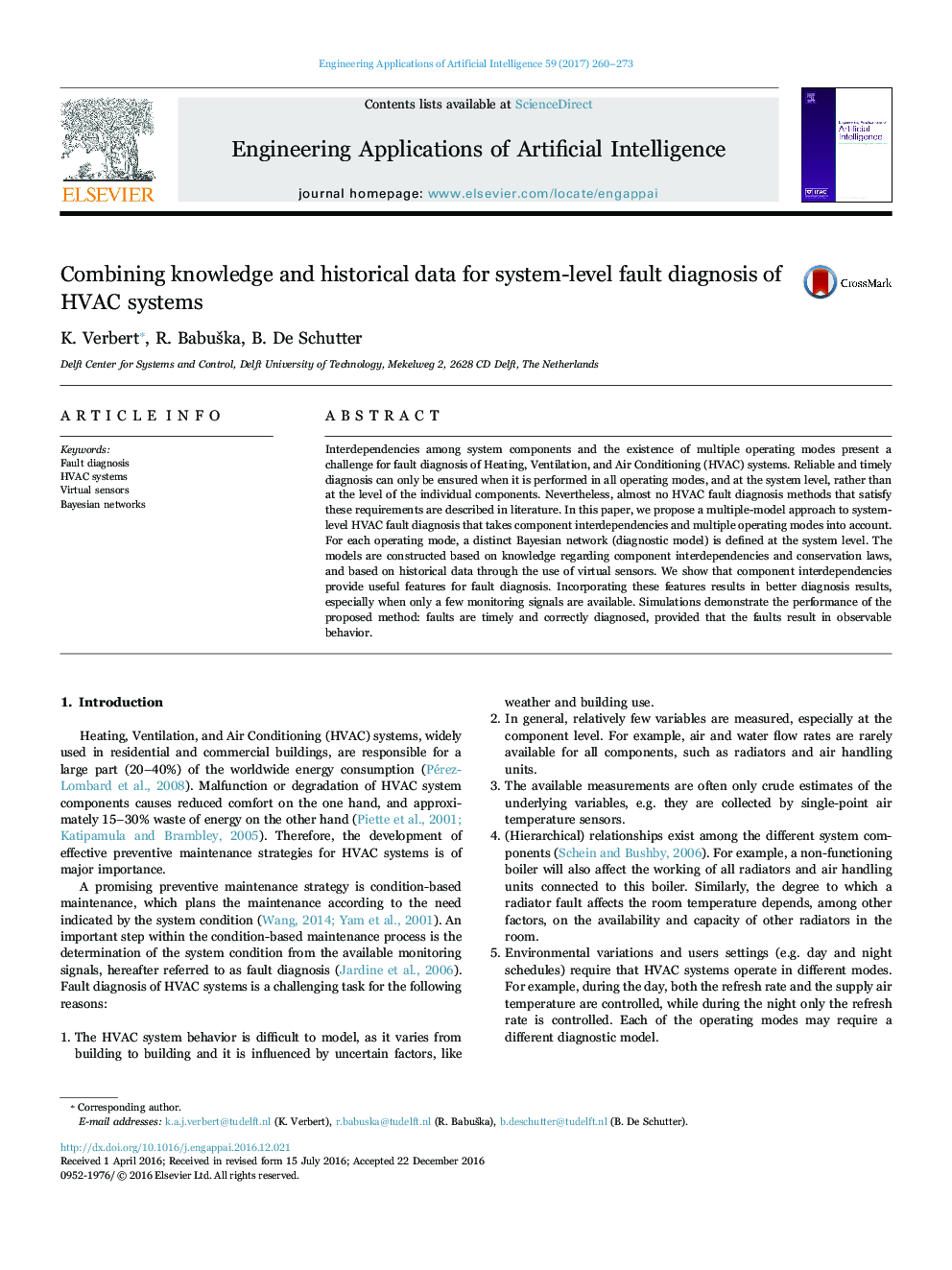| Article ID | Journal | Published Year | Pages | File Type |
|---|---|---|---|---|
| 4942819 | Engineering Applications of Artificial Intelligence | 2017 | 14 Pages |
Abstract
Interdependencies among system components and the existence of multiple operating modes present a challenge for fault diagnosis of Heating, Ventilation, and Air Conditioning (HVAC) systems. Reliable and timely diagnosis can only be ensured when it is performed in all operating modes, and at the system level, rather than at the level of the individual components. Nevertheless, almost no HVAC fault diagnosis methods that satisfy these requirements are described in literature. In this paper, we propose a multiple-model approach to system-level HVAC fault diagnosis that takes component interdependencies and multiple operating modes into account. For each operating mode, a distinct Bayesian network (diagnostic model) is defined at the system level. The models are constructed based on knowledge regarding component interdependencies and conservation laws, and based on historical data through the use of virtual sensors. We show that component interdependencies provide useful features for fault diagnosis. Incorporating these features results in better diagnosis results, especially when only a few monitoring signals are available. Simulations demonstrate the performance of the proposed method: faults are timely and correctly diagnosed, provided that the faults result in observable behavior.
Related Topics
Physical Sciences and Engineering
Computer Science
Artificial Intelligence
Authors
K. Verbert, R. Babuška, B. De Schutter,
